7 Proven Ways to Stop Shoes from Rubbing the Back of your Ankle and Heel in 2023
Wearing new shoes rubs your sensitive areas, like your heels, ankles, and Achillies Tendons, resulting in friction blisters, chaffing, and ankle pain. A painful condition like this can make it challenging to work if you have to stand for long periods of time.
So, how to stop shoes from rubbing the back of your ankle? There are different ways to prevent shoes from digging into your heel and ankle. One method is to use insole if your shoes size is bigger. The insole provides comfort and prevents heel slippage. You can also wear moisture-wicking socks if weather is not too hot. Furthermore, if your leather or suede dress shoes are still too tight even after break-in, you can stretch and soften the rough edges of your shoes so that they won’t scrape or dig into your heel.
You own your new favorite pair of shoes that rub and scrape the back of your foot and are thinking of disavowing them to prevent your ankles and heels from hurting. Don’t get disheartened. Let’s dive in and discover each method that can help shoes hurting the back of the ankle.
How to Stop Shoes from Rubbing the Back of Your Ankle?
Some several remedies and solutions can prevent your shoes from heels and ankles of your feet.
Here are the following ways to stop shoes from rubbing the back of ankle.
- Use Soft Insole
- Use Mole Skin
- Use Heel pads/cushions
- Get a pair of mositure-wicking socks, having a glove-like fit
- Stretch the tight shoes using shoe stretcher
- Soften the sharp edge of new shoes using leather or suede conditioner
- Use Anti-chafing stick
1. Good Cushioned and Orthotic Insole
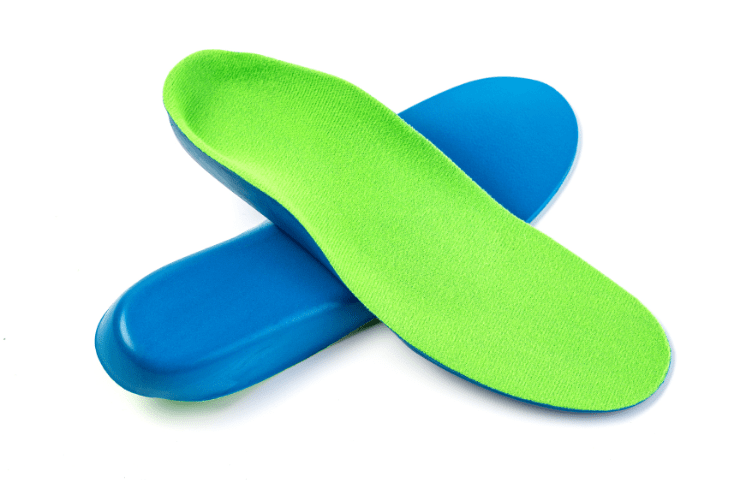
The insole has proved to be very effective in supporting your ankles as they provide good cushioning due to their soft padded material that easily molds your feet’ shape. Insoles with good arch support also prevent slipping of your feet in the shoes while walking or running.
If the insole is not properly cushioned, it will start rubbing your Achilles and heels to result in blisters formation. A proper-sized insole also helps to offer a good fit to your feet, which results in less movement of feet inside the shoes. Ultimately, it to keep shoes from rubbing your ankles.
If you are an athlete or a runner, high pressure is exerted on your feet from the surface. This shock transfers the force to your feet that urges rubbing the ankles against the shoes’ inner surface. In that case, a good-cushioned insole helps to absorb the impact from the surface and prevents hurting back of ankles and foot caused by rubbing against the shoes.
In addition to that, if the footbed or insole of the shoes does not match your feet arch, it would cause unnecessary movements of your feet within the shoes. So, a gel-cushioned stability insole helps to keep your feet properly aligned when standing, walking or running, and stops shoes from rubbing the back of your ankle.
2. Use Moleskins
Moleskin is a soft and sticky cotton fabric that is applied inside the shoes and makes it gentle on your feet and ankles’ skin. One side of moleskin is adhesive that is gently attached to the skin, and another side has a soft backing with additional padding and support that keeps your feet protected.
Moleskin also improves the fit of shoes by filling extra gaps between your feet and shoe lining, thus stopping the shoes from rubbing the back of your heel.
You can buy moleskin from here.
How to Stop Shoes from Rubbing the Back of Ankle using Moleskin
- Take a piece of moleskin large enough to stick over the area of the skin you want to cover.
- Place the piece on the heel and trace the area with a pencil.
- Using the scissors, cut out the shape of moleskin.
- Make sure that area of skin and shoes is free from dirt and dust.
- After that, strip off the protective cushioned backing of moleskin and stick it over you’re the skin of back of your ankle or heel.
You can check out the video below if you want to se a detailed tutorial on how to apply moleskin to prevent shoes from rubbing the back of your ankle and heel.
Additional Tip: You can also apply moleskin directly inside pf the heel of your shoes. This will be beneficial if your shoes inner material is uncomfortable and has an itchy seam that tends to dig into your heel and cut back of your ankles.
3. Use Heel Pads/Cushions
You can use heel pads/cushions in your heels and flats, which acts as a barrier between your footwear sharp edge and your ankles. Heel pads will provide some cushioning, and they’re thin enough that you can fit them into your shoes in your closet.
4. Wear Moisture-Wicking Soft-Material Socks
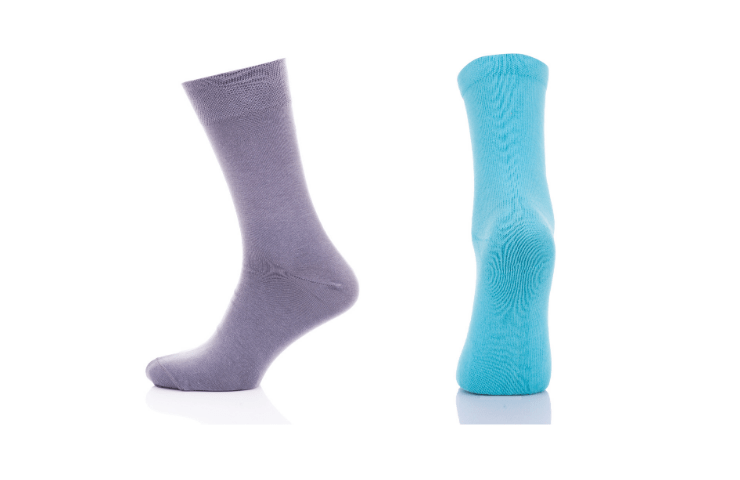
Some shoes are made of really uncomfortable materials like coarse fabric and synthetic textiles. These can cause irritation and chafing of ankles and heels. Wearing a soft pair of socks act as a protective barrier between shoes and your feet that can prevent shoes from cutting ankle.
Socks can minimize blistering and rubbing of your ankles while doing intense activities like jumping, running, or exercise. The advantage of moisture-wicking socks is that they keep your feet dry by absorbing excess moisture and making your feet breathable.
It is a well-known fact that moisture on the skin due to sweat increases friction due to which shoes rub more on your feet, thus causing painful blisters on the back of your ankle. Not only that, sweaty feet can lead to different foot problems like foot odor and bunion.
Thicker socks made of cotton can absorb moisture readily. Polyester socks are also specially designed to absorb moisture from your feet and prevent shoes from rubbing your ankles. According to research, socks with 93% of cotton content offer maximum coefficient of friction between socks and shoes,
In this way, the high coefficient of friction will prevent too much rubbing of feet against your shoes if you wear thick cotton socks. Moreover, cotton material is soft and breathable and offers comfort to your feet.
You can find the best moisture-wicking cotton socks here.
You can also use thinner socks if the toe box of your shoes doesn’t have a plenty of room.
5. Shoes Stretching
When you buy new shoes, they are a bit stiff and rub the back of your ankle and heel. Shoes that fit correctly are less likely to rub the back of your foot.
There are different tricks to break in the shoes so that they can stretch and stop rubbing the back of your ankle and heel.
How to Break-in Shoes that Rub your Heel
Using Hair Dryer:
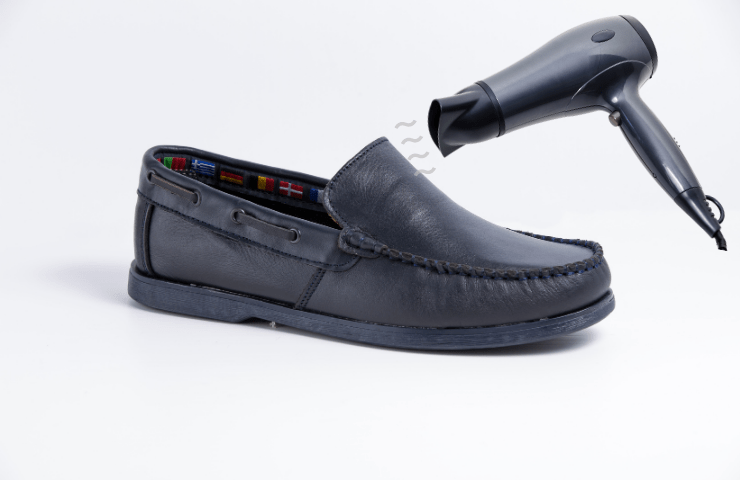
This method works well on leather dress shoes. In this method, you have to use a thick pair of socks that will add temporary cushioning around your feet so that shoes stretch a little more. Here are the steps that you can follow to stretch shoes using a hairdryer:
- First, warm your shoes all around with a dryer.
- Wear the shoes with a thick pair of socks.
- With hairdryer on medium heat, again blow over the tight spots on shoes for around 30 seconds.
- Walk around with the shoes in-house on clean surfaces such as rugs, carpets, or wooden floors.
- Repeat the above process until the shoes stop rubbing your ankles, and you feel comfortable.
A Peeled Potato Hack:
This sounds absurd, but it works. Follow the below steps to use a potato for stretching the shoes so that they stop rubbing your ankles:
- Peel the potato into the shape of the toe-box of the shoes and dry it with the towel.
- Leave the potato inside the shoes overnight.
- The peeled potato will expand its width, causing the shoes to stretch and making you feel comfortable.
Note: This method will only work for leather shoes as the fabric shoes will soak in the juice from the potato and damage its quality.
Stretching of Shoes by Freezing:
Don’t have leather shoes?
Don’t worry…
Use this method if you have running shoes such as sneakers, joggers, or casual footwear with synthetic or textile.
Do you know water expands when it is converted to ice?
So, yeah! We are going to apply the same principle…
- Here are the steps you can follow to stretch casual footwear or running shoes to stop rubbing back of your ankle.
- Take a zip-lock bag and fill it with water.
- Make sure that there are no leakages in the bag.
- Tightly fit the bags in your shoes.
- Place the shoes in the freezer overnight till the water freezes.
- As the ice expands, it will give a comfortable stretch in your new tight shoes.
Important Note: This shoe stretching method demands patience and a bit of trial and error, as you would not want to overstretch your shoes.
Use Shoes Stretcher:
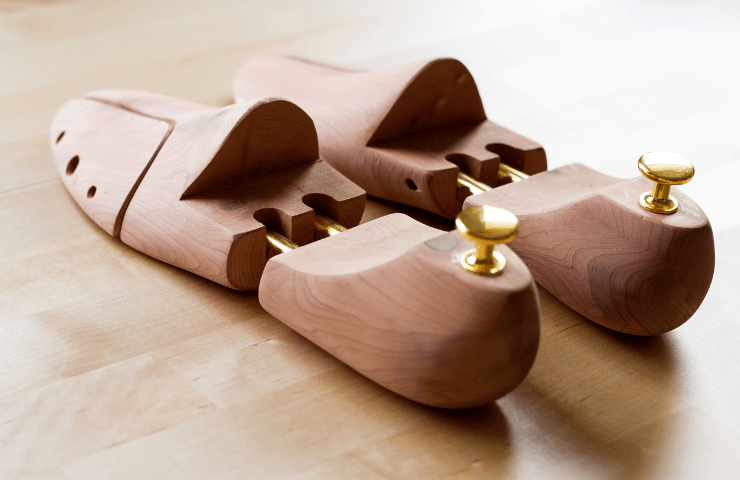
The footwear industry has been continuously trying to devise easy methods to stretch the dress shoes. One of those methods is using a shoe stretcher. It is one of the most proven methods to stretch the shoes in no time.
Using the shoe stretcher, you don’t have to worry about damaging the shoes’ material quality. A shoe stretcher can expand both the length and width of your shoes. This tool comes with a handle and knob that you turn to adjust according to the shoe’s size.
- All you need to do is to push the shoe stretcher tool inside your shoes.
- Tighten the knob until the shoe material fits tightly over the shoe stretcher.
- Leave for around 8 to 10 hours. After that, take out the shoe stretcher, and you will nice-fitting shoes.
Note: This method works best for leather shoes, sneakers, and oxfords. You can buy the best shoe stretcher here.
6. Soften the Back of Shoes
How to soften the back of new shoes? This question might come to your mind when your new shoes you have just bought start rubbing the back of your ankles and heels when you wear them.
There are different methods to soften the back and heel of the shoes to prevent them from digging into your heels.
Shoes Conditioner
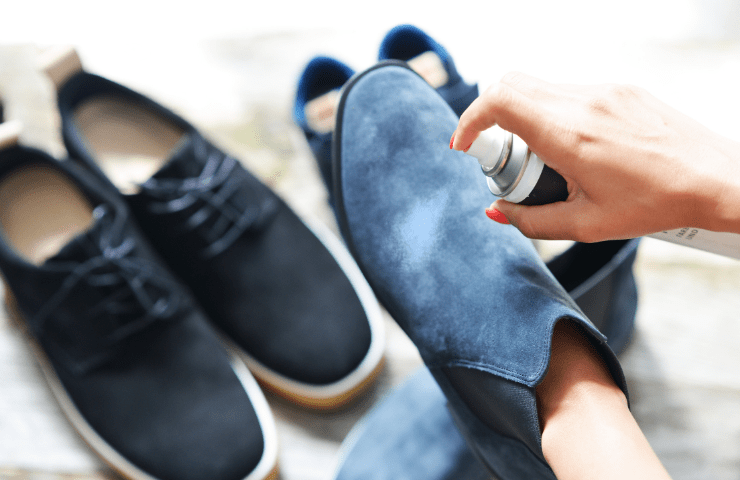
Shoe conditioner is like a creamy wax or an oily liquid that penetrates the roots of the leather of the shoe through scuffs and cracks. It reacts with the leather and softens it so that shoes do not dig into your heel and ankle.
So, apply the shoe conditioner gently over the entire shoe’s upper and leave it for few hours. After that, dry them with a hairdryer to warm your shoes. Put on the shoes, and walk around in them.
I hope using this method, shoes will become soft and stop rubbing your back or ankle. You can buy shoes conditioner from here.
Note: This method is only applicable for leather and suede shoes.
Damp Newspaper
It is one of the inexpensive methods to soften leather shoes. Sprinkle few drops of water over a piece of newspaper. Wrap it in the form of a ball and place it tightly inside your shoes. The moisture from the newspaper will soften the leather.
This method can result in some cracks in the leather. So, you can apply a shoe conditioner after that.
7. Using of Anti-friction Sticks to Stop Shoes Rubbing the Back of Ankle
To reduce the friction and stop shoes rubbing Achilles, you can buy anti-friction sticks from any drug store. When applied on your feet skin, it acts as a protective barrier between your feet and shoes. You can also buy it from here.
Final Words
Rubbing the shoes on the back of the ankle and heel can be quite agonizing as they start hurting your ankles and form foot blisters that can cause severe feet problems like Achilles tendonitis and plantar fasciitis.
To prevent these problems from happening, you can follow the hacks as I have discussed above. However, I would always recommend you only to buy the shoes if they are a perfect fit for your feet. Before making any online purchase, please check the return policy of the respective shoe brand.
I hope that you would have enjoyed this guide on how to stop shoes rubbing the back of your ankle. Please also share your valuable thoughts in the comments section below.
